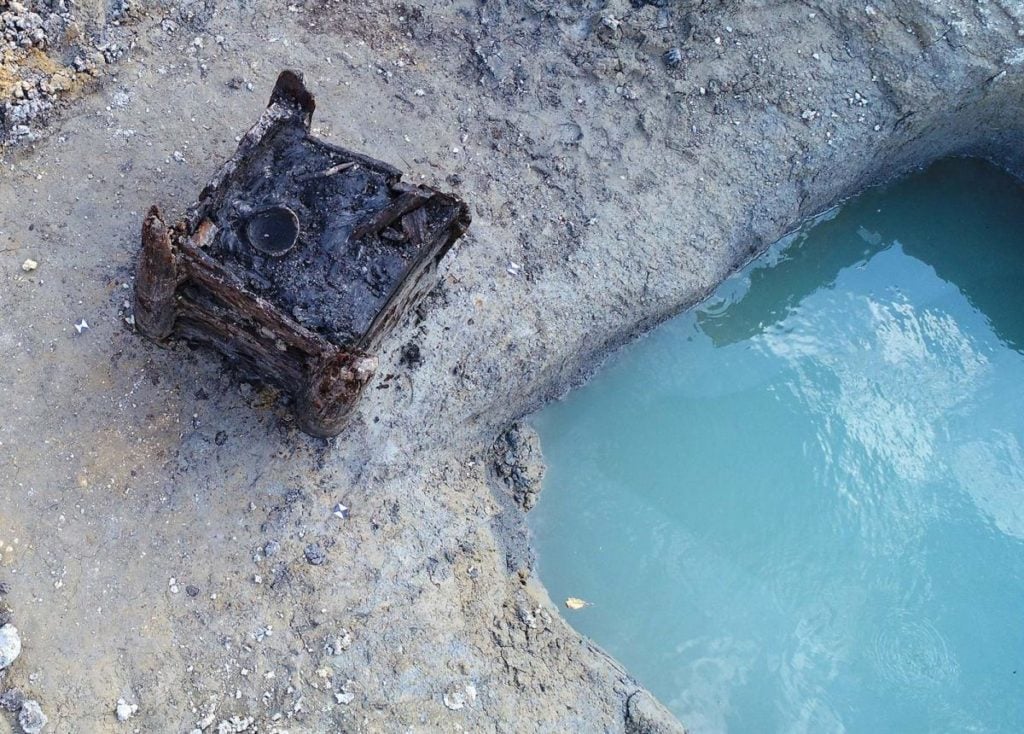Art World
Archaeologists Have Discovered a 7,000-Year-Old Wooden Well That Reveals Neolithic Craftsmanship Were Surprisingly Advanced
Well I'll be! The ancient structure is a boon for researchers.

Well I'll be! The ancient structure is a boon for researchers.

Caroline Goldstein

Researchers have found a 7,000-year-old wooden well, the oldest wooden structure ever discovered in Europe. The Neolithic structure is made of oak and hazel wood, which are indigenous to the East Bohemian region where it was discovered, near Ostrov, Czech Republic.
The well was discovered after being submerged underwater for centuries, which actually helped to preserve it, Karol Bayer, vice dean of the Faculty of Restoration at University of Pardubice said in a press release. “Now we cannot let it dry out,” he added, “or the well would be destroyed.” What’s the solution to maintaining the structure? Sugar, believe it or not.
Experts at the University will undertake the painstaking process of gradually replacing the water around the well with liquid that has an increased sugar concentration, which will help to prevent the wood from warping or otherwise becoming deformed as it dries out. It is expected to take several months for the process to be finished.
According to a paper published in the Journal of Archaeological Science‘s March 2020 edition, the well, which measures about two and a half feet wide and four and a half feet tall, reveals that the farmers who built it had considerable carpentry skills, especially considering the rudimentary tools they would have possessed at the time. The oak timbers were designed with grooved corner posts and inserted planks.
Scientists were able to determine exactly when the well was built based on advanced dendrochronology studies, dating the age of the tree-rings precisely. Upon close inspection, experts were able to date the trees that were cut to build the structure as being from between 5256 to 5255 BC, while the corner posts turn out to have been from previously felled tree-trunks, which scientists can say were cut in the autumn or winter of 5259 to 5258 BC. Detailed analyses of the residues from small animals and wildlife found inside the structure will help scientists to more accurately reconstruct and understand the environment of the Neolithic period, shedding light on how farmers first introduced non-native species to the area.